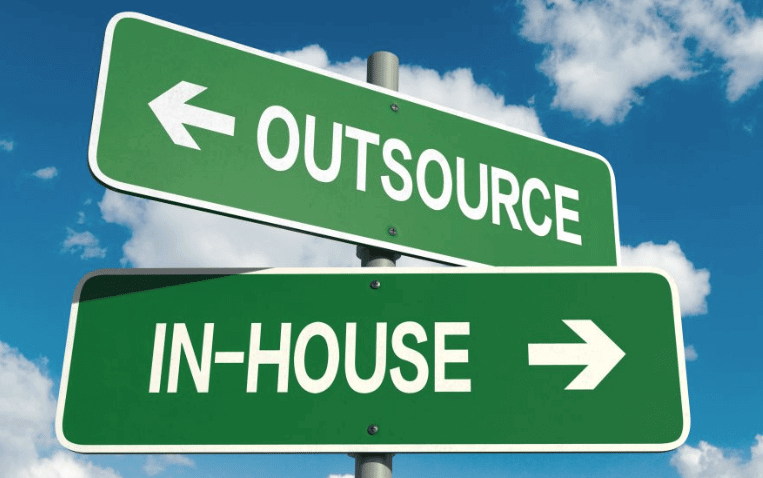
Key Takeaways
- Modern B2B marketing is the engine that makes outbound work, with buyers roughly 70% through their purchasing process before they ever talk to sales, you either influence them early or lose by default.
- Tightly aligned sales and marketing teams see dramatically better results, including faster revenue growth, higher win rates, and more efficient pipeline; treat marketing as part of the revenue team, not a separate department.
- Typical B2B buying groups now involve around 11 people, take almost a year, and generate 800+ interactions, so your marketing must support long, complex journeys instead of chasing quick, one-touch conversions.
- Email is still the revenue workhorse in B2B, about 77% of buyers prefer email contact and 59% of B2B marketers call it their top revenue channel, so investing in targeted, personalized email and SDR sequences is non-negotiable.
- Marketing budgets have flattened around 7-8% of revenue, which means teams have to squeeze more pipeline out of every dollar using better data, AI, and disciplined experimentation instead of random acts of marketing.
- The biggest marketing mistake sales teams feel is misalignment: generic campaigns, bad lists, and MQLs that never convert; fixing ICP, lead definitions, and feedback loops immediately improves SDR productivity.
- If you are not ready to build a full modern B2B marketing engine in-house, partners like SalesHive can plug in AI-powered email, cold calling, SDR outsourcing, and list building to turn strategy into booked meetings fast.
The B2B buying shift is real
If you sell B2B today, you’ve felt the change: prospects are harder to reach, buying committees are bigger, and “first conversations” happen later than they used to. The biggest problem is timing—buyers do a huge amount of work before they ever respond to outreach. When your SDRs finally get a reply, the account often already has a shortlist and a point of view.
That’s why modern B2B marketing matters even for outbound-heavy teams. Research from 6sense shows buyers are roughly 70% through their purchasing process before engaging sellers, which means your brand, narrative, and proof points either show up early—or you’re playing catch-up. In practice, outbound becomes dramatically harder when marketing isn’t shaping the market before the first dial or email.
At SalesHive, we treat B2B marketing as the system that makes sales development viable, not a separate “brand project.” Whether you run an in-house team or partner with a sales development agency, the goal is the same: create familiarity, relevance, and momentum so your outbound sales agency motion feels like helpful guidance, not a cold interruption.
What B2B marketing actually is (and why sales should care)
In practical terms, B2B marketing is the discipline of identifying the right accounts, educating the buying committee, and nudging consensus toward a decision in your favor. Everything else—content, events, paid, webinars, social, email—are just tactics that support those outcomes. When marketing is done well, it directly improves connect rates, reply quality, meeting-to-opportunity conversion, and deal velocity.
The reason it’s different from B2C is complexity. A typical B2B buying group involves about 11 people, the journey runs roughly 11.5 months, and it can generate 800+ interactions across content and people along the way. That’s the environment your SDRs are stepping into—multiple stakeholders, competing priorities, and long evaluation cycles that don’t fit a one-touch funnel.
So “marketing support” isn’t optional; it’s the leverage that makes every SDR touch more valuable. Strong marketing clarifies who matters (ICP), makes your name familiar (awareness), frames the problem and urgency (messaging), and arms reps with proof (content and case studies). Without those pieces, even the best cold callers and the best cold calling services end up pushing uphill.
Start with a brutally clear ICP before you scale anything
If you only fix one thing, fix your ideal customer profile. Bad ICP leads to bad lists, which leads to low-quality meetings, which leads to sales teams distrusting anything “marketing” sends them. That distrust is expensive—because it shows up as slower follow-up, weaker personalization, and SDRs ignoring inbound altogether.
The fastest path to an actionable ICP is a joint workshop across sales, marketing, and customer success using real closed-won and closed-lost data. You’re not just defining firmographics; you’re defining patterns that predict deals: triggers, tech stack, use cases, deal size bands, and the stakeholders who consistently influence outcomes. This is the foundation for list building services, targeting, and messaging that actually fit the market you win in.
ICP clarity also prevents one of the most common pipeline leaks: treating every lead like it’s sales-ready. If you don’t score and nurture appropriately, you’ll keep feeding SDRs early-stage researchers who aren’t ready to talk. It’s not surprising that roughly 79% of marketing leads never convert into sales when nurturing is weak—because the handoff is happening before interest is real.
Build demand that turns outbound from interruption into education
Outbound works best when marketing makes the first few touches feel inevitable instead of random. That means your content and positioning have to answer the questions buyers are already researching, not just promote features. A typical B2B buyer consumes 6–12 pieces of content before engaging a rep, which means your assets are shaping the shortlist long before an SDR gets a reply.
It also means your programs can’t be single-channel. Buyers regularly move across an average of 10 interaction channels throughout the journey, so disconnected efforts—email-only, event-only, social-only—leave influence on the table. The practical fix is consistency: one narrative, one ICP, and one set of proof points expressed across email, site, LinkedIn outreach services, and sales conversations.
To make this real for SDRs, we recommend mapping content to stages and objections so reps never default to “just bumping this.” When each touch includes a relevant insight, a short case study, or a simple one-pager, reply quality increases and unsubscribes drop. Your cold email agency motion becomes dramatically stronger when every step offers value instead of repeating the same pitch.
If marketing doesn’t own pipeline alongside sales, it will default to chasing noise instead of revenue.
Make email the workhorse—and support it with calling and clean data
Email is still the backbone of B2B communication, and the numbers make it hard to argue otherwise. Around 77% of B2B buyers prefer email contact, and 59% of B2B marketers call email their top revenue-generating channel. If your sequences aren’t targeted, personalized, and deliverable, you’re leaving pipeline on the table.
But email doesn’t win alone—it wins when it’s integrated with the rest of your motion. Pair targeted email with disciplined follow-up from a cold calling team, and you create more surface area for engagement across the buying committee. This is where a cold calling agency or SDR agency can add leverage: consistent activity, better testing, and the operational rigor to keep sequences fresh.
None of this works without data quality. Stale records, missing direct dials, and misaligned contacts burn SDR hours and damage sender reputation. Whether you handle b2b list building services internally or outsource sales development execution, treat list hygiene as a core marketing function—not a one-time project.
Fix the sales–marketing handoff (and stop rewarding the wrong outcomes)
Most “marketing vs. sales” tension is really a measurement problem. When marketing is rewarded for MQL volume, you get bloated lead lists and form fills that don’t convert, and SDRs stop trusting anything routed to them. The fix is shared definitions and shared outcomes: align on what qualifies as an MQL and SQL, and agree on the behavioral thresholds that justify an SDR touch.
The upside of alignment is significant. Organizations with tightly aligned sales and marketing operations see 24% faster three-year revenue growth and 27% faster three-year profit growth than those without alignment. That’s not a “soft” benefit—it’s a comp plan and staffing plan benefit, because it raises win rates and makes pipeline more efficient.
Operationally, this looks like a weekly revenue meeting where marketing reports on meetings and pipeline—not just clicks—and SDR leaders share real objections from calls. A simple recurring feedback loop keeps campaigns from going stale and prevents the classic mistake of content created in a vacuum. If you’re running sales outsourcing or an outsourced sales team, this cadence is even more important because it keeps external execution tied tightly to internal reality.
Track revenue-centric KPIs and optimize with disciplined experimentation
In 2024–2025, marketing budgets averaged about 7.7% of company revenue, and that pressure forces discipline. You can’t afford random acts of marketing; every program should connect to meetings, opportunities, pipeline, and closed-won revenue. The goal isn’t “more activity,” it’s more qualified sales conversations per dollar.
A clean measurement model also keeps teams from hiding behind vanity metrics. If you tag campaigns in your CRM and track conversion rates by stage, you quickly see what actually produces opportunities versus what simply generates attention. That clarity helps you decide what to keep in-house and what to outsource to a b2b sales agency or outbound sales agency that specializes in execution.
| Vanity metric | Revenue metric we recommend |
|---|---|
| Impressions and clicks | Marketing-sourced and influenced meetings |
| Form fills (MQL volume) | MQL-to-meeting and meeting-to-opportunity conversion |
| Webinar registrations | Opportunities and pipeline attributed to the campaign |
| Email open rate | Reply rate, booked meetings, and opportunity creation |
AI can help you move faster, but it won’t save broken fundamentals. Use AI to enrich data, personalize at scale, and speed up testing, but keep the basics tight: ICP, messaging, deliverability, and honest attribution. Teams that combine AI with rigorous experimentation learn faster and scale what works without inflating headcount.
Next steps: build the engine, then decide what to outsource
If you want a practical starting point, begin with two workshops: one to lock ICP and lead definitions, and one to audit your current outbound sequences for relevance and value. From there, build a lightweight content library mapped to the objections your reps hear most, and train SDRs on when to use each asset. These are small steps, but they create immediate lift in reply quality and meeting quality.
Then decide what to own versus what to delegate. Many teams keep strategy, positioning, and core content in-house while outsourcing execution-heavy work like b2b cold calling services, deliverability management, list research, and at-scale personalization. If you need to hire SDRs quickly without building the entire management and ops layer, partnering can be the most efficient path.
At SalesHive, we plug into the exact areas that make outbound work: ICP operationalization, b2b list building services, email personalization, and SDR execution across email and calling. The end goal is simple and measurable: more qualified meetings from the right accounts, created by a repeatable revenue system—not by luck.
Sources
- Business Wire (6sense 2024 Buyer Experience Report)
- 6sense (The Impact of Purchase Cost on the B2B Buying Journey)
- McKinsey (Five fundamental truths: How B2B winners keep growing)
- Forbes Advisor (Email Marketing Statistics)
- Digital Demand Center (Key B2B Demand Generation Stats)
- Gartner (2024 CMO Spend Survey)
- Review42 (SiriusDecisions sales and marketing alignment stats)
📊 Key Statistics
Expert Insights
Treat B2B Marketing as a Revenue Engine, Not a Coloring Department
If marketing does not own pipeline numbers alongside sales, it will default to chasing impressions and MQL volume. Put marketing on the hook for sourced and influenced opportunities, not just leads, and review that performance weekly with sales. Once everyone is staring at the same pipeline dashboard, conversations shift from activity to impact.
Start With a Brutally Clear ICP Before You Scale Outbound
Bad ICP equals bad lists equals angry SDRs and junk meetings. Sit sales, marketing, and customer success down to define your ideal customer profile based on real closed-won data: firmographics, tech stack, triggers, and deal characteristics. Only after you agree on that profile should you let anyone launch campaigns or outsource lead generation.
Use Content to Make Every SDR Touch More Valuable
Your reps should never send a naked follow-up like 'just bumping this to the top of your inbox'. Arm them with a content library mapped to stages and objections so that every email or call includes a helpful asset or insight. Over time, this turns your outbound from interruption to education and massively improves reply quality.
Operationalize Feedback Loops Between SDRs and Marketing
Your SDRs hear the market every day; if that intel never gets back to marketing, your campaigns go stale fast. Run a recurring 30-minute session where SDRs bring real call snippets and email threads, and marketing brings new messaging or assets. Decide together what gets promoted, what gets killed, and what gets tested next.
Measure Programs by Meetings and Pipeline, Not Just Clicks
It is nice when your webinar has a thousand registrants; it is meaningful when it generates 15 qualified meetings. Tag every campaign all the way through to opportunity and revenue in your CRM so you can see which channels and offers reliably create sales conversations. Then double down ruthlessly on what predictably books meetings and retire everything else.
Common Mistakes to Avoid
Letting marketing chase MQL volume instead of pipeline quality
When success is measured by form fills, you get bloated lead lists that sales cannot work and SDRs stop trusting anything that comes from marketing. That tanked trust shows up as slow follow-up, low connect rates, and missed revenue.
Instead: Shift to shared revenue and pipeline KPIs, and redefine MQL/SQL together with clear thresholds. Track how many marketing leads turn into meetings and opportunities, and compensate both teams on the same numbers.
Running spray-and-pray outbound that buyers actively avoid
Gartner found that 73% of B2B buyers actively avoid suppliers who send irrelevant outreach, and 61% prefer a rep-free buying experience when possible. Generic mass emails and cold calls not only fail, they damage your brand with buying committees you may need later.
Instead: Tighten your ICP, use smaller, more focused segments, and personalize around real triggers or pains. Build sequences that add insight or content value at each step instead of repeating the same pitch nine times.
Treating content as a blog project, not a sales enablement tool
If content is created in a vacuum, it rarely addresses the questions prospects actually ask on calls. SDRs end up writing their own one-off PDFs and emails, and buyers get inconsistent messaging across channels.
Instead: Have marketing interview top reps, listen to call recordings, and mine CRM notes to build content around real objections and use cases. Make that content easy for SDRs to search, grab, and send directly from the tools they already use.
Handing every inbound lead directly to sales with no scoring or nurturing
Most inbound leads are early-stage researchers; shoving them straight to sales fills calendars with low-intent meetings that rarely convert. Over time, reps start ignoring inbound entirely because it feels like a waste of time.
Instead: Introduce basic lead scoring and nurture programs that warm up lower-intent leads with email, retargeting, and content. Only route leads to SDRs once they hit clear behavioral thresholds that indicate real buying interest.
Underinvesting in data quality and list building
If your contact data is stale, missing direct dials, or misaligned with your ICP, your SDRs will burn hours on wrong people and bad numbers. That kills morale, pipeline, and your sender reputation.
Instead: Make high-quality, ICP-aligned list building a core B2B marketing function or work with a partner who specializes in it. Continuously clean, verify, and enrich records, and route only valid, relevant contacts into active sequences.
Action Items
Run a joint sales–marketing workshop to lock in your ICP and lead definitions
Pull closed-won and closed-lost data from the last 12-24 months, then have sales, marketing, and CS define ideal firmographics, personas, and triggers together. Document what constitutes a marketing-qualified and sales-qualified lead so everyone scores and routes leads consistently.
Map at least one useful piece of content to each major buying stage and objection
List the 5-7 most common questions or roadblocks your reps hear and create simple assets against each, a one-pager, short video, or case study is enough to start. Train SDRs on when to use each asset in their sequences so every touch carries value.
Align KPIs so marketing owns meetings and pipeline alongside sales
Define targets for marketing-sourced meetings, opportunities, and revenue and add them to marketing's scorecard. Review these numbers in the same weekly revenue meeting where you look at SDR activity and pipeline health.
Clean and rebuild your outbound lists around the agreed ICP
Stop dumping generic database pulls into sequences; instead, build focused account and contact lists that align with your target industries, company sizes, and buyer roles. Use enrichment tools or a specialist provider to add direct dials, verified emails, and relevant account insights.
Audit your current outbound sequences for relevance and value
Pull the top 2-3 email and call sequences and review them with both SDRs and marketing. Kill or rewrite steps that add no new insight, and replace them with touches that reference specific pains, triggers, or content pieces.
Decide what to keep in-house vs. what to outsource to a specialist
Assess your internal strengths across strategy, content, data, and execution, and identify gaps that slow you down. For gaps like list building, cold calling, or at-scale email personalization, consider plugging in a specialist partner such as SalesHive instead of trying to build everything from scratch.
Partner with SalesHive
On the marketing side, SalesHive helps you define and operationalize your ICP, build high-quality prospect lists, and create outbound messaging that reflects your real value props and customer stories. Their proprietary tools, including the eMod engine for at-scale email personalization, let you send highly relevant emails that do not feel like templates. You can choose US-based SDRs for complex, high-ACV motions or Philippines-based SDRs for higher-volume programs, all under flexible, no-annual-contract agreements. The result is simple: more qualified meetings from the right accounts, faster, without having to build a full in-house SDR and marketing ops team.
❓ Frequently Asked Questions
What exactly is B2B marketing in the context of sales development?
In a sales development context, B2B marketing is the discipline of identifying your ideal accounts, educating the buying committee, and creating consistent demand so SDRs are not starting from zero every time they reach out. It includes positioning, content, campaigns, and data that make your brand familiar and credible long before a rep calls. Done well, B2B marketing fills the top and middle of the funnel with the right accounts and gives SDRs a clear reason to engage them now.
Why does B2B marketing matter if most of our revenue comes from outbound sales?
Even in outbound-heavy organizations, buyers have changed how they buy: most conduct the majority of their research online and are often 60-70% through their process before talking with sales. Without solid marketing, your outbound team is essentially interrupting strangers who have never heard of you and may already prefer a competitor. B2B marketing warms the market, creates familiarity, and provides content that SDRs can use so their outreach feels relevant instead of random.
How is B2B marketing different from B2C marketing?
B2B marketing targets buying committees, not individual consumers, and the stakes and cycles are much higher. You are dealing with multiple stakeholders, long evaluation processes, and complex products, so tactics revolve around education, consensus-building, and risk reduction rather than impulse buys. That is why content, email, events, and direct sales development are so central in B2B, while channels like mass consumer advertising often play a smaller role.
What role should B2B marketing play in supporting SDRs and outbound?
Marketing should make SDRs' lives easier on three fronts: targeting, messaging, and proof. That means delivering high-quality, ICP-aligned account and contact lists; giving reps tested messaging frameworks and content; and building a library of case studies, ROI stories, and competitive positioning they can use in sequences. When SDRs have the right accounts, the right narrative, and the right assets, they book more meetings with less effort.
How do we know if our B2B marketing is actually working?
Look beyond vanity metrics like impressions or generic leads and track a short list of revenue-centric KPIs: marketing-sourced and influenced meetings, opportunities, pipeline, and closed-won revenue. Also monitor conversion rates between each stage, lead to MQL, MQL to meeting, meeting to opportunity, opportunity to close, and compare performance across channels. If your programs consistently produce qualified meetings and pipeline at an acceptable cost per opportunity, your B2B marketing is doing its job.
What is the best B2B marketing channel for lead generation today?
There is no single 'best' channel, but email remains the backbone of B2B lead generation, with most buyers preferring it for communication and most marketers citing it as their top revenue driver. Cold calling, paid search, LinkedIn, and events all work, but they work best as part of an integrated strategy tied together by clear positioning and good lists. The real differentiator is not the channel itself; it is how precisely you target, how relevant your message is, and how consistently you follow up.
When should a B2B company consider outsourcing parts of its marketing or SDR function?
If you lack the internal bandwidth or expertise to build clean lists, write effective outbound sequences, manage deliverability, or coach SDRs, you will usually move faster with a specialist partner. Outsourcing is especially useful when you are entering a new segment, need to ramp pipeline quickly, or want to test new motions without hiring a full internal team. Many companies keep strategy and brand in-house but outsource execution-heavy work like cold calling, email outreach, and research to agencies that live and breathe B2B sales development.
How does AI change B2B marketing and sales development?
AI does not replace the fundamentals; it amplifies them. It can help with smarter list building, better intent scoring, faster content personalization, and more efficient SDR workflows, but it still needs a solid ICP, good messaging, and clear goals. Teams that combine AI with disciplined B2B marketing basics, clean data, aligned sales and marketing, strong email and calling programs, will simply learn faster and scale effective motions more efficiently.






